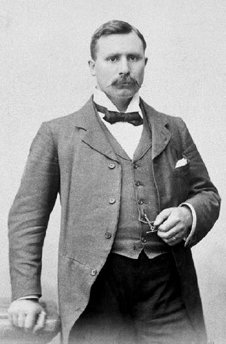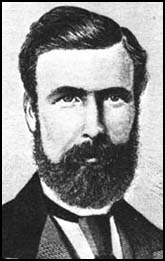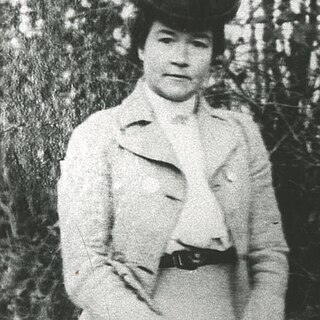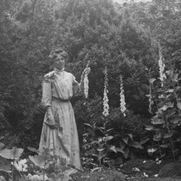
Helen Beatrix Potter was an English writer, illustrator, natural scientist, and conservationist. She is best known for her children's books featuring animals, such as The Tale of Peter Rabbit, which was her first published work in 1902. Her books, including 23 Tales, have sold more than 250 million copies. Potter was also a pioneer of merchandising—in 1903, Peter Rabbit was the first fictional character to be made into a patented stuffed toy, making him the oldest licensed character.

Norfolk is a ceremonial and non-metropolitan county in East Anglia in England. It borders Lincolnshire to the north-west, Cambridgeshire to the west and south-west, and Suffolk to the south. Its northern and eastern boundaries are the North Sea, with The Wash to the north-west. The county town is the city of Norwich. With an area of 2,074 square miles (5,370 km2) and a population of 859,400, Norfolk is a largely rural county with a population density of 401 per square mile. Of the county's population, 40% live in four major built up areas: Norwich (213,000), Great Yarmouth (63,000), King's Lynn (46,000) and Thetford (25,000).

Lombard is a village in DuPage County, Illinois, United States, and a suburb of Chicago. The population was 44,476 at the 2020 census.

Thomas Mann, was an English trade unionist and is widely recognised as a leading, pioneering figure for the early labour movement in Britain. Largely self-educated, Mann became a successful organiser and a popular public speaker in the British labour movement.

Joseph Arch was an English trade unionist and politician, born in Barford, Warwickshire, who played a key role in unionising agricultural workers and in championing their welfare. Following their enfranchisement, he became a Member of Parliament.

The Tale of Jemima Puddle-Duck is a children's book written and illustrated by Beatrix Potter. It was first published by Frederick Warne & Co. in July 1908. Potter composed the book at Hill Top, a working farm in the Lake District she bought in 1905. Following the purchase, her works began to focus on country and village life, incorporating large casts of animal characters and sinister villains. Jemima Puddle-Duck was the first of her books set wholly at the farm with background illustrations based on the farm buildings and yard, and nearby locales.

Edward Douglas Coke, 7th Earl of Leicester,, styled Viscount Coke between 1976 and 1994, was an English nobleman. The Earl of Leicester was one of Norfolk's leading figures and played a key role in preserving and modernising the Holkham Estate over the last 40 years.

George Potter was a prominent English trade unionist.

Burston is a village and former civil parish, now in the parish of Burston and Shimpling, in the South Norfolk district, in the county of Norfolk, England, 3 miles (4.5 km) north of Diss. In 1931 the parish had a population of 279. In the 2011 Census, Burston and Shimpling had a population of 568 people in 234 households.

The National Union of Agricultural and Allied Workers (NUAW) was a trade union in the United Kingdom which existed between 1906 and 1982. It represented farmworkers.

East Pennard is a village and civil parish 4 miles (6.4 km) north west of Castle Cary, and 5 miles (8.0 km) south of Shepton Mallet, in the Mendip district of Somerset, England. It has a population of 348. The parish includes the hamlets of Stone, Parbrook and Huxham.
Peter Bruce Pauling Whitbread was an English actor and screenwriter.

Scarning is a village and civil parish in the English county of Norfolk. It covers an area of 14.13 km2 (5.46 sq mi) and had a population of 2,932 in 1,092 households at the 2001 census, which eased at the 2011 Census to 2,906 in the same number of households. For local government, it falls within the district of Breckland. It lies two miles (3.2 km) west of Dereham and 17 miles (27 km) west of Norwich, on the old turnpike road between Dereham and Swaffham.

The Iowa Soldiers' Orphans' Home, also known at the Annie Wittenmyer Home or the Annie Wittenmyer Center, located in Davenport, Iowa, United States is a former orphanage for children. It is listed on the Davenport Register of Historic Properties and as a historic district on the National Register of Historic Places. The home was originally used for orphans from the American Civil War. Starting in 1876, children from broken homes, as well as orphans from all of Iowa's 99 counties, were taken in at the home.

The National Agricultural Labourers Union (NALU) was a trade union representing farm workers in Great Britain.

Annie Catherine Higdon, also known as Kitty Higdon, was a British schoolmistress. She and her husband, Tom, were at the centre of the 25 year long Burston School Strike. Their battle with authority is celebrated annually by a rally that attracts nationally known politicians and trade unionists.
Jane Esdon Brailsford, née Jane Esdon Malloch, was a Scottish suffragette.

Caroline "Kitty" Kenney was a sister of Annie Kenney, one of the most well-known British suffragettes to go on hunger strike, for whom the Blathwayts planted commemorative trees in their Eagle House garden in Batheaston, Somerset. Another sister, Jessie, was abroad when her involvement in explosives was discovered by the authorities.

Jane "Jenny" Kenney (1884–1961) also known as Jennie, was a British suffragette and Montessori teacher, who supported her sisters Annie Kenney and Jessie Kenney in the Women's Social and Political Union. She later became joint principal of an independent school in New York, USA.
The school strikes of 1911 were a series of mass walkouts of schoolchildren in the United Kingdom, protesting against corporal punishment and poor conditions in schools. Originating in Llanelli, in Wales, at least 62 towns across the UK saw school strikes in September 1911.



















